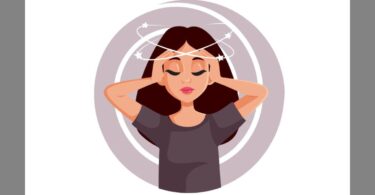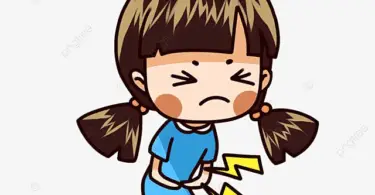First interview
A boy, 9yrs old, is suffering from reccurrent pneumonia which occurs every 6 months. He developed his first episode of pneumonia at 18 months of age. His mother says that he has very bad physical endurance (3). He the first one tired in a group of children having some physical activity, and the slightest physical exertion makes him very weak and tired. He is generally very tired and needs sleep very often during the day when he comes home from the school.
Observation: he is overweight, with a very pale face, dark circles around his eyes, dry lips and answers “I dont know” to every question.
His sleep is very restless (physical restlessness during sleep) but he sleeps normally. His mother says he is very obstinate.
1st followup (2 months after the remedy)
After he took the remedy, his energy and psychological state worsened for approximately 2 weeks. He was very tired and irritable. After this period of the initial aggravation his state began to ameliorate. He is not as pale as he used to be; circles around his eyes diminished and when he comes home, he does not need to lie down and sleep as before the remedy. Instead of that he does some activity like reading. Two weeks after the remedy he developed acute coryza. but it was the firs time in his life when it did not affect the lungs. After 4 days it disappeared by itself without any interference or medication. He is much more communicative, and asked me questions during our last interview. Last week he developed very slight eczema around his lips. He has never had any eczema in the past. There is no itching and it is slowly disappearing by itself.
Prescription: WAIT
2nd followup (4 months after the remedy)
He is healthy, no acutes at all, energy is even better than in the last followup. He is still putting on weight although he does not eat much or engage in sports. He can run a long distance without problems.
Prescription: WAIT
3rd followup (6 months after the remedy)
Since the short acute he had 2 weeks after the remedy was given, he has not been sick even one single day for the whole period of time. Has lots of energy, is and doing sports but now he caught a cold when he swam in a very cold river (18 degrees of celsius). However his lungs were not affected.
Prescription: WAIT
Take some time to ponder what remedy you would choose, THEN POST YOUR ANSWER AS A COMMENT. …and then see the answer below…..
[toggle title=”CLICK TO REVEAL THE ANSWER“]
Analysis of the case for students of homeopathy
The first thing I spotted when taking this case was that the child has a big belly and at the same time is very pale. I could see it very clearly before he and his mother sat down.
My first impression was: maybe it is a case of Calcarea carbonica because of the big belly hanging down and pale face with dark rings around the eyes as these symptoms are keynotes of Calcarea carbonica. I did not cling to this idea too much but my first impression and observation led me to think of this remedy at a first glance. Anyway I kept my mind open.
The first information that came up as a main complaint was the fact that this child suffers from repeated pneumonia. Every time he catches a cold, it goes straight to the lungs and he develops pneumonia. There was no single episode of any acute having a different course, so it is obvious that the lungs of this child are in a very precarious state. The question is why? Most probably it’s due to the strong hereditary predisposition coming from his ancestors.
I knew that Calcarea carbonica can also cure pneumonia especially, such affecting the apex of the right lung but such a strong predisposition is not characteristic of Calcarea carbonica. When we see such a strong predisposition, we have to ask about tuberculosis in the family history. If we confirm Tbc in the family anamnesis, we can identify what we call the tubercular miasm.
Here it is very important to remind ourselves that we never prescribe on miasm but on the symptom picture. Prof. Vithoulkas says: “every remedy can cure any miasm, if the symptoms agree.” Precise knowledge of the theory of miasms can make us think of other remedies in cases like this when we suspect the influence of miasm, and if we can confirm such remedy, it can be given with great success. If we don´t know this theory and we would not have an idea of remedies other than Calcarea carbonica, then most probably we would give Calcarea carbonica and learn that its effect is superficial and transient. That is the situation (described in the old books as “when apparently indicated remedies fails to act”) that tells us there is a possible miasmatic layer.
Actually, in such instances the remedy which seems to be indicated is not really indicated. It only looks like the symptoms agree but in reality they don´t and therefore the remedy given according to this false picture does not act as we expected. It is very important to realize that the uppermost remedy is not always clear enough, as there can be just two or three strong keynotes of it while the majority of other symptoms point to an underlying remedy.
This is why the qualitative totality is much more important than quantitative totality of symptoms.
What makes us think about other possibilities than Calcarea carbonica is the understanding of what has to be cured first in this case. This understanding is much more important than mechanical work with symptoms and it has to be done before we try to find the remedy, and this is true for every particular case we encounter.
So, due to the great weakness of his lungs, I suspected the influence of the tubercular miasm and asked about the family history of tuberculosis. His mother said: “I dont know about anybody from my family having tbc.” What does this information mean for us? On one hand we are not sure about tbc in the family history but on the other hand we don’t have to exclude this possibility. The truth is that this does not help us in any way to confirm our hypothesis for sure.
Although I did not confirm Tbc in the family history, I was sure about the tubercular miasm, as the course of inflammations shows clearly that the child´s lungs are heavily predisposed.
The mother told me: “My son is very tired, very weak, must sleep often when coming home from school.” When she said that he is very obstinate, my mind came back to Calcarea carbonica but the strong tendency was something that kept me doubting Calcarea.
Then I realized that it is only the mother who speaks! The child was sitting there without movement, just staring around, so I put a few questions to him. I asked very simple ones like, What do you like to eat, Do you have any fears etc. But the child just answered “I don´t know” to every single question. I said to myself: what remedy are you looking for? What must this remedy have? I tried to make it very easy for myself and keep my thinking process very simple. I knew I wanted the remedy to have these symptoms as a keynotes:
Strong tendency to lung diseases and strong weakness
When I realized what I was looking for, I was able to see the bigger picture, realizing that this boy does not speak. He suffers from lung complaints, is very tired and weak and does not speak. Why? Because of this peculiar kind of weakness which affects the chest, the lungs, not only locally as a tendency to pneumonia but as a feeling of overall weakness which is AGGRAVATED BY TALKING. I was not sure about it and had to exclude the possibility that the boy also could have several other reasons why he does not speak, for instance timidity or aversion to people or aversion to answer questions (which is typical for Phosphorus – another remedy having strong affinity to the lungs). But his mother said: “He likes people. He is not timid and he is quite loquacious.” But he was not loquacious at all.
Knowing that Stannum is one of the most important tubercular remedies having a combination of respiratory complaints together with strong weakness as a keynote and when I connected this with my observation of “not speaking behavior” and knowing that speaking aggravates the Stannum patient, I realized that the uppermost symptoms resemble this remedy the most.
Prof. George vithoulkas beautifully describes the importance of this combination in his book essence of materia medica.
In Hering´s Guiding symptoms we can see in the second degree: “face pale, sickly-looking”
In Radar keynotes we see the first sentence in stannum: weakness and exhaustion. Often related to respiratory system.
So my prescription was Stannum metallicum 200C.
Now we are coming to a brief differential diagnosis with some remedies that are close to this case:
Spongia is the remedy we have to compare as it also has the combination of great weakness together with respiratory complaints. But Spongia is not aggravated by talking. We often (but not always) can trace an anxious expression together with this respiratory complaint as this is a very characteristic feature of this remedy. The facial appearance of this child is giving us the idea of exhaustion.
Ammonium carbonicum is very similar to another two remedies having some resemblance with this case, namely Calcarea carbonica and Antimonium tartaricum. It also has a lot in common with Carbo vegetabilis.
Calcarea carbonica is most probably the underlying remedy and will be needed later when Stannum finishes its work. Coming back to Ammonium carbonicum, we have to think of this remedy mostly in cases when the lungs and heart are affected together, especially in cases of cardiac asthma (and Naja as well ).
In Ammonium carbonicum we can see a strong aggravation from ascending stairs as well as in Calcarea carbonica and Arsenicum album but this remedy is not as much aggravated by speaking as Stannum.
Ammonium carbonicum has a very characteristic appearance of the face which resembles Gushing syndrome which is manifested as the cortisone face. The face of Ammonium carbonicum is also pale but very bloated. The resemblance of this remedy with Tartar emetic and Carbo vegetabilis lies in this: all these remedies have a rattling of mucus in the chest. This is most prominent in Antimonium tartaricum in which it is accompanied by great sleepiness and cyanosis of the lips and face. In carbo vegetabilis it is not so prominent but we can see the desire to be fanned and drops of cold perspiration on the forehead (Veratrum album). The difference between Carbo vegetabilis and Ammonium carbonicum is this: in Carbo vegetabilis we have a strong aggravation of all symptoms by lying down while Ammonium carbonicum wants to lie down, especially on his abdomen. Carbo vegetabilis is cold on the periphery (feet) while Ammonium carbonicum is cold in central parts while the periphery is quite warm.
Hope you enjoyed it 🙂
Petr
[/toggle]
.




Great lesson not to choose the obvious remedy, especially when it does not match the pace, depth and intensity of the disease. Thanks, Petr!
Finding the uppermost remedy – the essential to obtain the cure of the patient.
Thank you so much for this lesson, and I look forward for the next lessons.